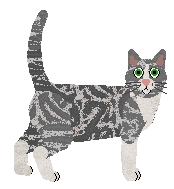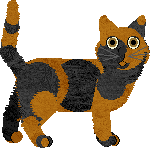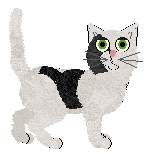Although an ancient landrace breed, the European Shorthair as an established pedigreed breed is a curious case. On the FIFe studbook since 1949, no formal standard was developed until 1981; and the breed, as a breed, remains unknown globally and rare even within Europe. And yet technically it is the most popular “breed” in Europe – as every random-bred shorthair cat in Europe can be considered a European Shorthair. However the pedigreed form is most popular in Scandinavia, and is considered the national cat of Finland, although they are a recognized endangered breed in Sweden; in Norway the predominant landrace breed is the Norwegian Forest Cat, which the European Shorthair is forbidden from resembling.
Unlike the British Shorthair or American Shorthair, two similar landrace breeds in concept if not execution, the European Shorthair’s standard has yet to develop a fixed type. Indeed, FIFe’s overall comment on type says, “Breeding should be based on the fact that it is a robust and supple cat, which is not different, from the point of view of anatomy, from the European domestic cat.” Breeders primarily brag about their cats’ lack of pedigreed ancestry – proudly proclaiming that no British Shorthairs were involved in the making of this breed.
Type & judging remarks
Should resemble a European barn cat. The overall shape of the cat is medium, neither cobby nor svelte, gently rounded but not excessively so, muscular and robust but not athletic or hearty. Nothing is extreme, and no aspect of the cat should be reminiscent of an established pedigreed breed, particularly the British Shorthair, Persian, or Siamese.






 in tuxedo, bicolour, harlequin or van pattern.
in tuxedo, bicolour, harlequin or van pattern.


 eyes
eyes


